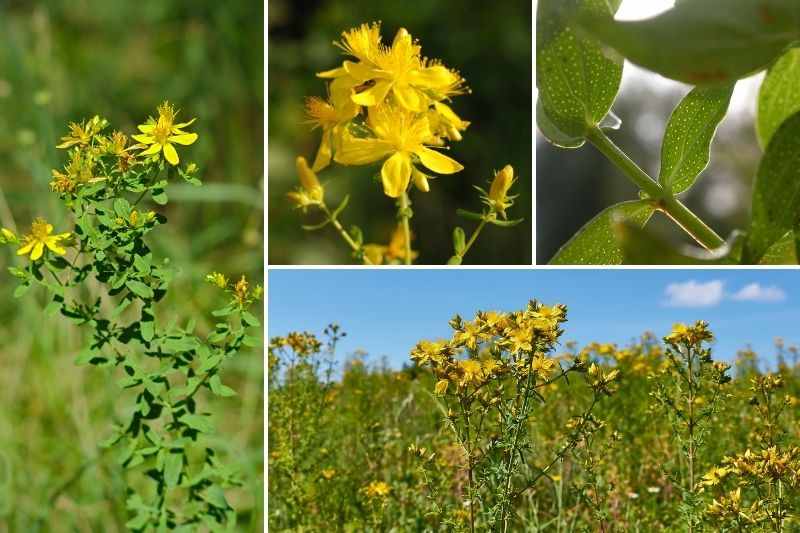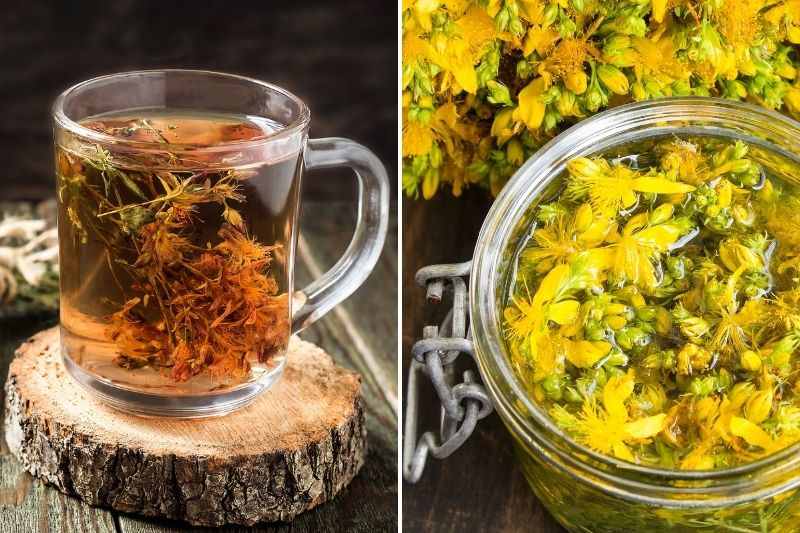St John's wort (Hypericum) is an easy-to-grow perennial. For this reason it has long been a garden favourite. Numerous horticultural varieties exist with very different characteristics: from shrub forms, such as St John's wort 'Hidcote', to groundcover types, such as Greek St John's wort. Wild species are also widespread and occur in varied habitats, such as wood or marsh. But only one species, common St John's wort, is used for its beneficial properties.
In phytotherapy, use of St John's wort goes back more than 2,000 years. Traditionally used for burns and other skin irritations, St John's wort is now thought to help with mild to moderate depression.
Discover our advice on how to dry and use this plant.
Which St John's wort to use?
The only St John's wort used for therapeutic purposes is common St John's wort, Hypericum perforatum. Its name means 'herb with a thousand holes'. Indeed, its leaves, held up to the light, appear perforated by many tiny holes, which are actually glands containing an essential oil. This species is also called St John's herb, not to be confused with 'St John's herbs', a term applied historically to various plant species depending on time and region.
Perforate St John's wort is a wild herbaceous plant with an upright stem commonly found on banks and in meadows. As with other species of the Hypericum genus, flowers have five luminous yellow petals and very conspicuous stamens. Flowers and leaves are also dotted with small black spots. The wild species is less showy than cultivated varieties, which have usually been selected for spectacular flowering. Use a flora – a book listing wild species of a given region – to help identify the plant you are looking for.
 Foliage and flowers of Hypericum perforatum. Top right: leaf perforations (photo Matt Lavin - Wikimedia)When to harvest St John's wort?
Foliage and flowers of Hypericum perforatum. Top right: leaf perforations (photo Matt Lavin - Wikimedia)When to harvest St John's wort?
In phytotherapy, the parts of St John's wort used are the flowering tops – that is, the end of the stem where many small flowers are clustered and would be too delicate to pick individually. Consequently, wait until the plant is in flower before harvesting.
Flowering begins in June and continues into July. This is therefore the time to gather the plant.
In dry weather, using a pruning shear, cut the flower-tipped ends of the stems. Choose stems where flowers have just opened and none have yet begun to fade. Avoid cutting stems at the plant base so the perennial St John's wort is not exhausted.
How to dry and store St John's wort?
St John's wort should be dried fairly quickly, within hours of harvesting.
First, dislodge any insects on the flowering stems by shaking the harvest gently.
The simplest drying technique is to make small, loose bunches so air circulates well and moisture is not trapped in the centre.
Hang them upside down to dry in a dark, dry, well-ventilated place.
The plant is dry when it becomes crumbly. Store then in an airtight container – a glass jar will do – or in a paper bag in a dry, dark place.
 Prepare small bunches and hang upside down for drying.Benefits and uses
Prepare small bunches and hang upside down for drying.Benefits and uses
Many beliefs surround St John's wort. It was long regarded as a magical herb able to ward off the devil.
Today there are two main ways to use St John's wort: topically for skin treatment or orally to relieve mild depression.
Topical treatment for skin
You can prepare an oil at home that may help heal burns. To do this, fill a jar with flowering tops then cover them with a vegetable oil (olive or sweet almond). After four weeks' exposure to sunlight, the preparation can be strained and used on the skin.
Oral use for depression
Before any herbal treatment for mild depression, consult a healthcare professional specialising in phytotherapy who can advise on the best treatment for you.
A St John's wort treatment would take 2 to 4 weeks to show effects. Generally, preparations with guaranteed active ingredient content (standardised extract, mother tincture) have largely replaced herbal teas. However, infusions can be made at home. For dosing, consult a professional.
Also, as with all depression treatments, doses should be reduced gradually.
 St John's wort tea is made from dried flowers. Right: oil made from fresh St John's wort flowers.Advice and warnings
St John's wort tea is made from dried flowers. Right: oil made from fresh St John's wort flowers.Advice and warnings
St John's wort must be used with great caution.
Drug interactions and other concerns
First, drug interactions are very numerous and can have significant consequences. St John's wort interacts with more than 70 substances, so exercise greatest caution.
The action of certain medicines may be altered by taking St John's wort. Among others, and not exhaustively, medications for heart disorders, anticoagulants, antidepressants, and oral contraceptives. And the list goes on.
Moreover, St John's wort may also interact with many other plants, notably valerian, ginkgo or passionflower.
 Valerian flowers (Valeriana officinalis), Ginkgo biloba leaves and passionflowerSide effects
Valerian flowers (Valeriana officinalis), Ginkgo biloba leaves and passionflowerSide effects
In addition, in some people, particularly those with fair skin, St John's wort may cause photosensitisation, that is, a reaction to sunlight or ultraviolet light causing redness, itching and irritation.
Who should avoid it
St John's wort is not recommended for people with bipolar disorder as it may provoke manic episodes.
This plant should be avoided by pregnant and breastfeeding women and by children.
As you can see, St John's wort is a plant that is particularly difficult to use.
As always, and even more so here, seek advice from professionals and be sure to mention any treatments you are taking to avoid problems.
To learn more about growing St John's wort, read our articles:
































Comments